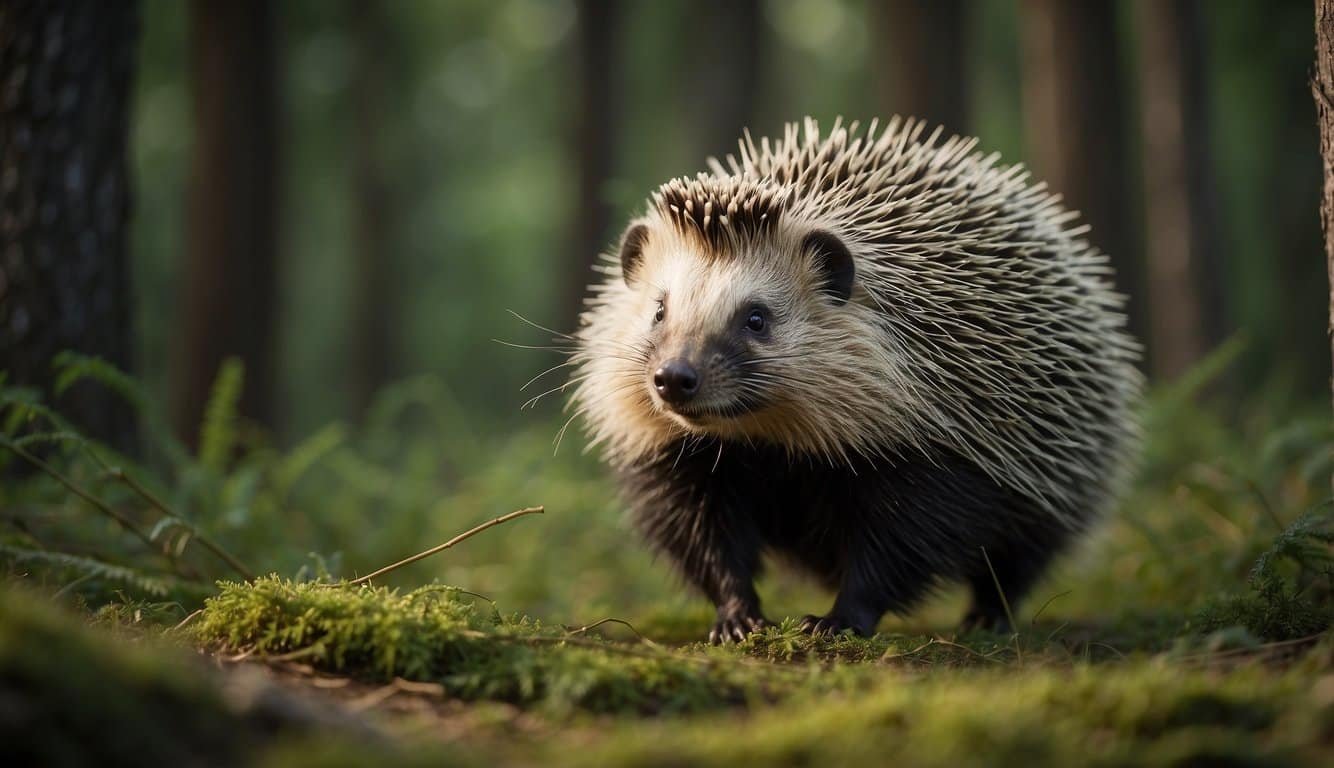Porcupine Overview

Porcupines are intriguing members of the rodent family. This group of large rodents is split mainly into two families: Hystricidae, or Old World porcupines, which are native to Africa, Asia, and Europe; and Erethizontidae, or New World porcupines, found in North and South America.
The Latin name for the family Hystricidae, the Old World porcupines, hints at their characteristic spines or quills—sharp defense mechanisms that have made them famous. These quills detach easily and can become embedded in would-be predators. Meanwhile, New World porcupines, in family Erethizontidae, are known for their tree-climbing prowess and prehensile tails.
| Family | Native Regions | Notable Traits |
|---|---|---|
| Hystricidae | Africa, Asia, Europe | Sturdy, barbed quills |
| Erethizontidae | North America, South | Climbing ability, prehensile tails |
Fossils and studies on the evolution of porcupines suggest that these rodents have been around for a long time, although they have changed and adapted over the millennia. Today’s species vary in size, habitat, and behavior but share common ancestry.
The classification of porcupines is particularly interesting due to their widespread habitat and the evolutionary distinctions between the two families. In general, these creatures are night-time foragers who primarily eat plant material, playing a unique role in their respective ecosystems.
For more enchanting insights into their daily lives and human interactions, delve into the nuanced relationship between porcupines and people, such as the suitability of porcupines as pets or the appropriate actions to take upon finding an injured porcupine.
Physical Characteristics and Behavior

North American porcupines, or Erethizon dorsatum, are remarkable for their unique defense mechanisms and dietary habits. These creatures are equipped with thousands of quills for protection and have adapted to forage for a variety of forest foods.
Quills and Defense
Porcupines are most well-known for their quills—sharp spines that cover their backs and tails. Contrary to popular myth, they cannot shoot these quills, but the spines can detach easily when a predator comes into contact with them. Each quill has barbs that can make them difficult to remove and can cause severe injury to would-be attackers.
Diet and Foraging Behavior
As herbivores, porcupines primarily consume bark, leaves, twigs, and stems, but they don’t shy away from fruit or berries when available. They are equipped with strong teeth that help them chisel away wood and gnaw through tough plant matter. Foraging usually occurs at night since they are nocturnal animals.
Habitat and Distribution
These rodents are highly adaptable and can be found in various habitats across North America, from forests to desserts. Porcupines are skilled at climbing trees, which not only assists in their search for food but also offers protection from predators. Their geographic range extends from the northeastern United States up to Canada and into northern Mexico.
Reproduction and Lifecycle
Porcupines lead solitary lives except during the breeding season. Females have a gestation period of about seven months and typically give birth to a single porcupette. Young porcupines are born with soft quills that harden within a few days. The average life span of a porcupine in the wild is 5 to 7 years.
Discover more about the demographic and behavioral characteristics of North American porcupines in pinyon-juniper woodlands within a study from the The American Midland Naturalist.
Find insights into the porcupine’s role as a specialized herbivore in this article from Northwestern Naturalist.

